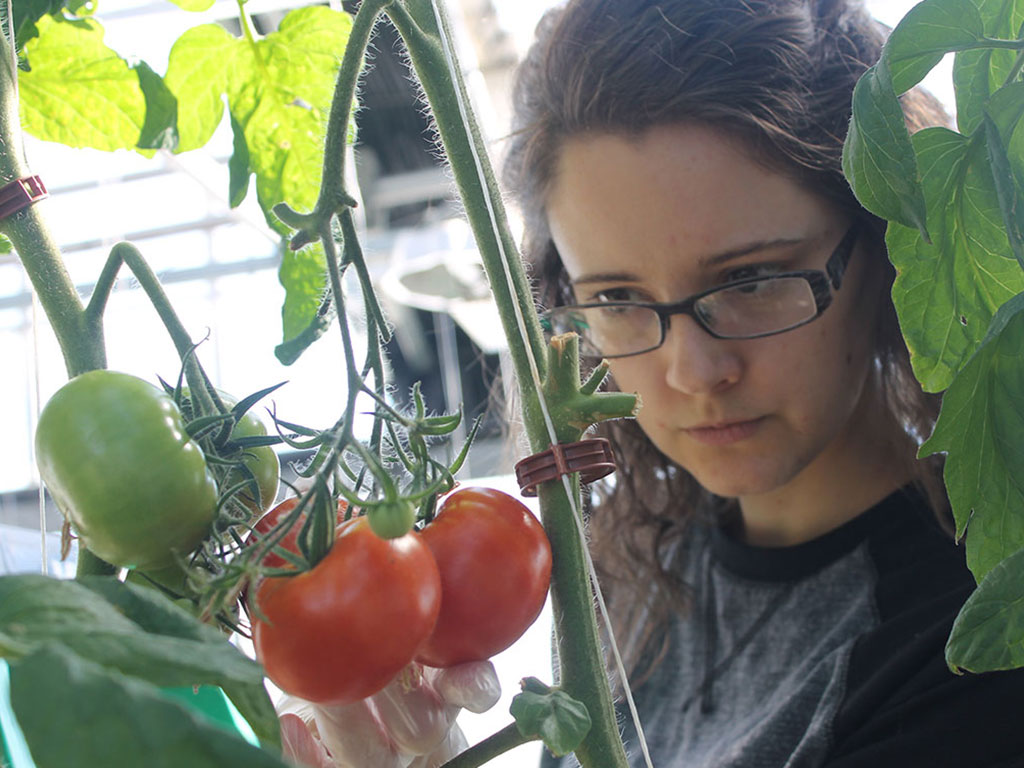A Kirkwood Horticulture student inspects some tomatoes
CEDAR RAPIDS, Iowa (May 24, 2017)-Hydroponic and aquaponic systems were installed in the Kirkwood greenhouse to teach the next generation of horticulturalists this environmentally-friendly way of gardening. When it’s too cold for outdoor gardening, the growing season moves indoors to help continually supply garden-fresh produce to patrons of The Class Act and Kirkwood’s Culinary Arts program.
“About one-third of all food grown on campus is done through these systems,” said Bob Smith, Kirkwood’s greenhouse specialist. “That amounts to nearly 1,000 pounds of food annually.”
All growing is done in water only, no soil. Man-made fertilizer feeds plants grown hydroponically, while Nile tilapia (fish) provide nutrients for plants grown aquaponically. The aquaponic tank, which continually re-circulates water through the plant roots, can hold up to 75 tilapia. After about 10 months, the fish are large enough to go into the Culinary Arts curriculum. This method primarily grows herbs and assorted greens. Vegetables such as tomatoes, peppers and cucumbers are grown hydroponically where water also circulates through their roots, except along long troughs. Their hardy plant vines are braced with special plant clips as they grow and to remain vertical.
Because of being grown in a climate-controlled environment, these plants live much longer and can remain productive up to 18 months. Their produce is larger than their soil-grown cousins and are blemish-free. These systems are 90 percent more water-efficient than conventional outdoor growing methods.
“The future of hydroponic growing looks bright,” said Smith. “It’s projected to be one of the top five in-demand jobs in agriculture. This new hands-on approach to gardening is a definite benefit to students in our program.”
For more information, go to www.kirkwood.edu/greenwater.

